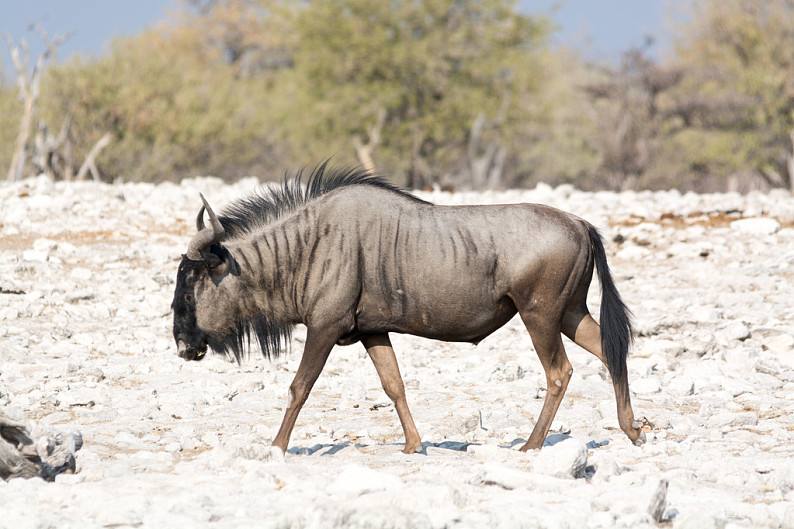Connochaetes taurinus
IUCN
LCBasic Information
Scientific classification
- name:Connochaetes taurinus
- Scientific Name:Blue wildebeest, black-tailed wildebeest, black-bearded wildebeest, South African wildebeest, southern wildebeest, black-spotted wildebeest
- Outline:Ungulata
- Family:Eutheria Artiodactyla Bovidae Gnu
Vital signs
- length:123 cm
- Weight:118 - 270 kg
- lifetime:20 Year
Feature
This animal is very fast and is famous for its speed.
Distribution and Habitat
The blue wildebeest is common in eastern and southern Africa from Kenya to eastern Namibia and as far south as the Orange River in South Africa. Grasslands and savannas are the main habitats of the blue wildebeest.
Appearance
Blue wildebeests are typical herbivores. Their wide mouths can eat large amounts of tender grass, and they feed on short grasses in savannas and plains. They feed day and night, and when grass is scarce, they will also feed on shrubs and branches. Blue wildebeests are usually accompanied by steppe zebras, who tend to feed on the higher, less nutritious grass layers, leaving the tender, short grass at the bottom exposed for the blue wildebeest to eat. Blue wildebeests drink water about twice a day, so they prefer moist grassland areas. However, they can also live in the Kalahari Desert to obtain water by eating roots and tubers that store water underground.
Blue wildebeests gather with their peers in loose large groups, which can be divided into bachelor groups, mother-and-child groups, and leader groups. Blue wildebeests can withstand quite crowded groups, and there can be 270 wildebeests per square kilometer of grassland. At night, wildebeests rest together in large groups of thous
Details
The blue wildebeest has a sturdy body and its coat is dark blue or gray-blue, sometimes gray-brown. Both male and female wildebeest have large, backward-curved horns. The male horns can extend up to 83cm, while the females only reach 30-40cm. The blue wildebeest has clear black stripes on its neck and shoulders. The blue wildebeest's mane is concentrated on the throat and nape. The mane on the throat is drooping and white, like a beard; while the mane on the nape is long and flowing, black. The nose of the blue wildebeest is black, and the side face is the same color as the body.

Blue wildebeest migrate seasonally as vegetation structure and food supply change. Blue wildebeest have been recorded running 90km in two days to reach areas with localized thunderstorms. Before the late 1980s, 4 to 6 million wildebeest migrated 2,000 kilometers round trip each year in the Serengeti Plain. In the central Kalahari, blue wildebeest used to migrate annually between the Makgadikdi Basin in northern Botswana and the Orange River in Namibia and South Africa. The migration of blue wildebeests depends on the supply of surface drinking water, as they must drink water every day or every other day.
Since there are several species of wildebeest, how to identify blue wildebeests? Here is the simplest way to identify: the erect mane (the mane is erect) must be the South African wildebeest subspecies.
The main threats include large-scale habitat loss, drying up of water sources, human settlement disturbance and poaching. Diseases carried by livestock can be transmitted to blue wildebeest. Fences or other facilities built by humans can hinder the large migration of blue wildebeest herds between the wet and dry seasons.
An article studying the Masai Mara ecosystem showed that the local blue wildebeest population has dropped by 80% since 1977, which is attributed to the disappearance of wet season pastures caused by the expansion of agriculture.








